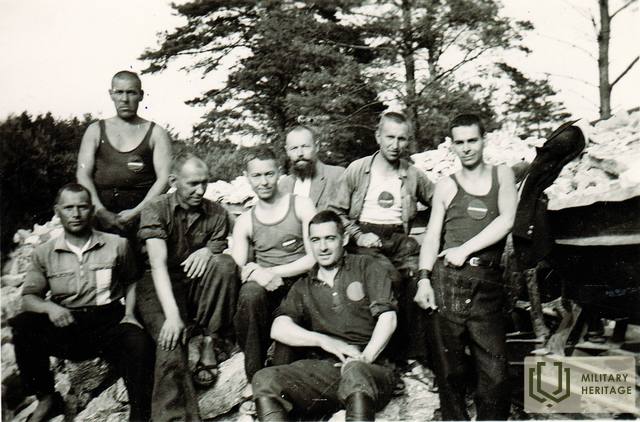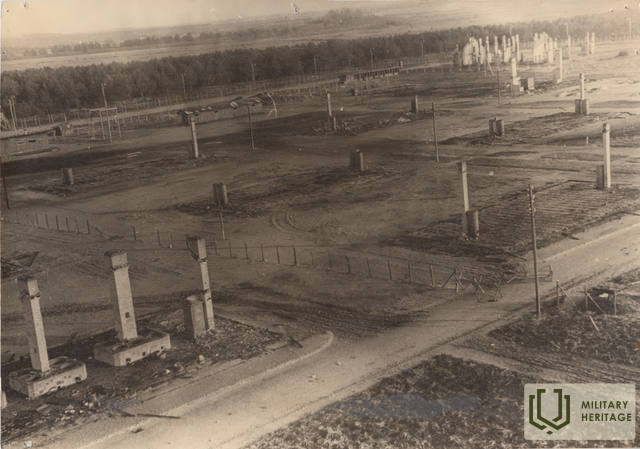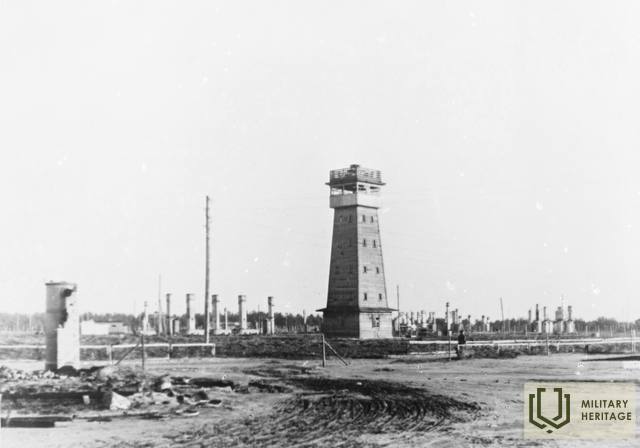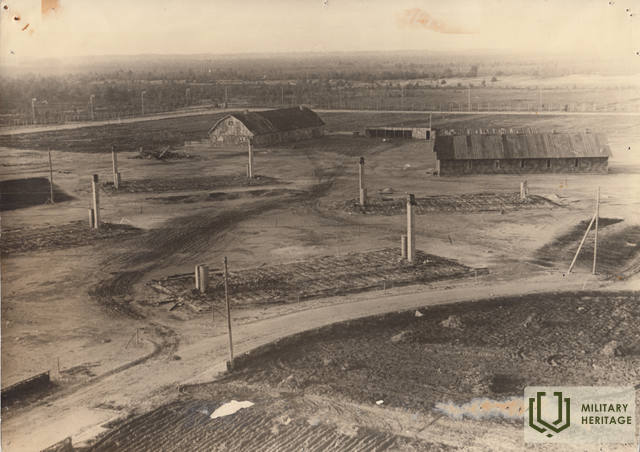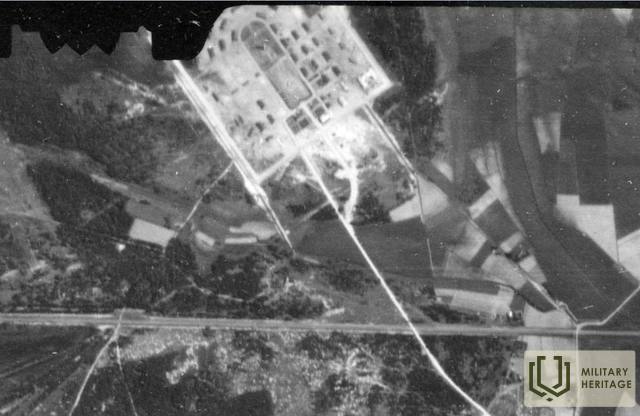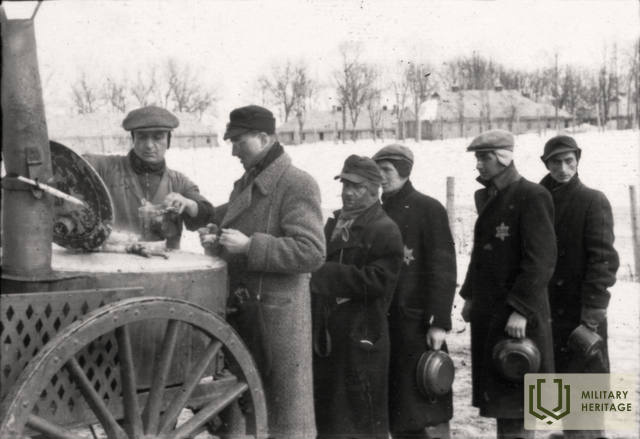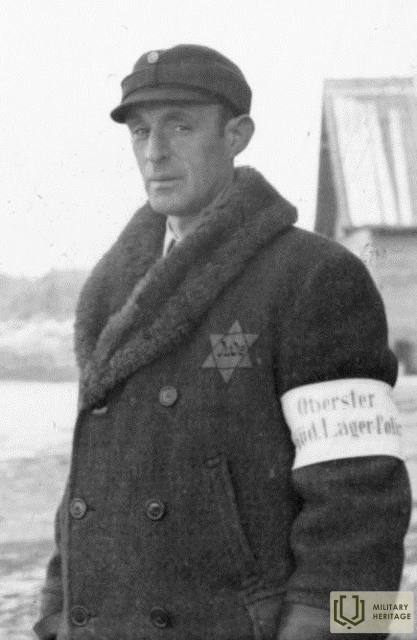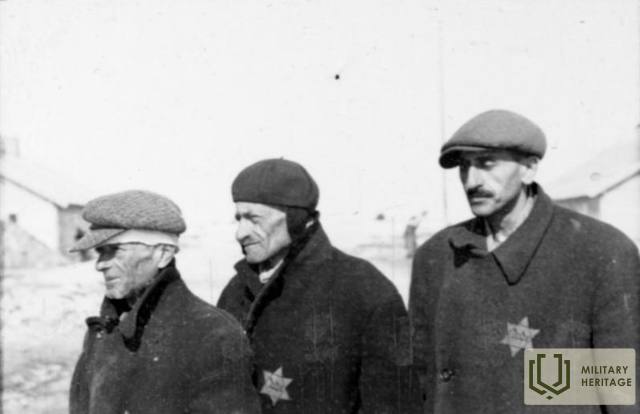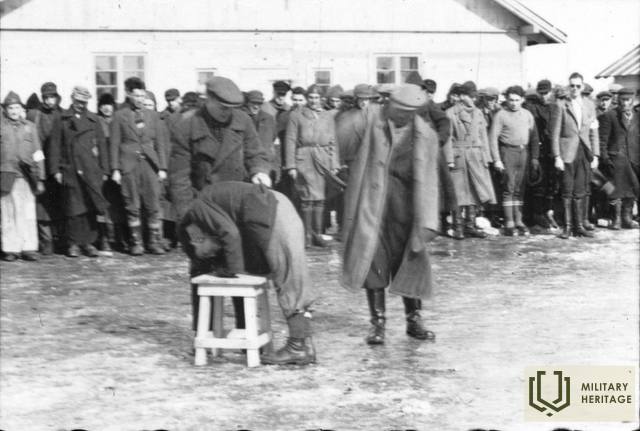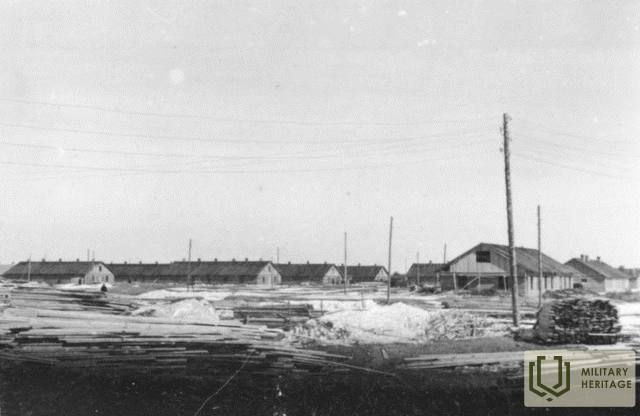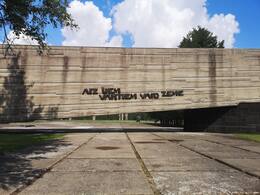Salaspilio memorialinis ansamblis
II Antrasis pasaulinis karas
Salaspilio stovyklos statyba prasidėjo 1941 m. spalį, kai statybose dalyvavo vietos statybininkai, taip pat sovietų karo belaisviai ir Rygos centrinio kalėjimo kaliniai. Nuo gruodžio mėnesio pagrindinė stovyklos darbo jėga buvo apie 1500–1800 žydų, deportuotų iš Vokietijos, Austrijos ir Čekoslovakijos. Nuo 1942 m. gegužės mėn. Salaspilis pradėjo veikti kaip išplėstas policijos kalėjimas su prijungta darbo auklėjimo stovykla.
Stovykloje per jos gyvavimo laikotarpį lankydavosi apie 1000–2000 pravaikštininkų, kuriems buvo skiriamos laisvės atėmimo bausmės ne ilgesniam kaip 56 dienų laikotarpiui. Dauguma į išplėstą policijos kalėjimą įkalintų asmenų buvo politiniai kaliniai, kurie iki karo pabaigos buvo laikomi saugumo areštinėje (Schutzhaft), o ankstesnis paleidimas pasitaikydavo tik pavieniais atvejais. Nemažai jų buvo suimti už bendradarbiavimą su sovietų okupaciniu režimu 1940–1941 m. Tarp politinių kalinių taip pat buvo daugiau nei 100 Latvijos ir Lenkijos nacionalinio pasipriešinimo judėjimo narių, įskaitant Latvijos Centrinės Tarybos narius Konstantiną Čakstę, Bruno Kalninį, Ludvigą Sėją ir kitus. Bendras politinių kalinių skaičius stovyklos gyvavimo metu galėjo siekti 5000–6000 žmonių.
1943 m. vasario–balandžio mėn. į Salaspilį atvyko mažiausiai 4500 žmonių iš Baltarusijos, suimtų per antipartizaninę kampaniją „Žiemos magija“ (pranc. Winterzauber). 1943 m. rugpjūčio–rugsėjo mėn. į Salaspilį buvo atvežti 3284 žmonės, suimti per priverstinio darbo kampaniją „Vasaros kelionė“ (pranc. Sommerreise) Latgaloje. Abiejų šių kampanijų metu į Salaspilį atvežti darbingi vyrai ir moterys buvo išsiųsti dirbti į Vokietiją. Mažiausiai 2741 vaikas buvo atiduotas Rygos regiono parapijų ūkininkams ir globėjų šeimoms. Dalis vaikų atsidūrė Rygos Šventosios Trejybės-Sergijaus moterų vienuolyne, taip pat buvo išsiųsti į vaikų namus Bulduruose ir Saulkrastuose.
1942–1943 metų sandūroje Salaspilyje buvo įkurtas „specialus skyrius estams, latviams ir lietuviams, kuriuos nuteisė SS ir policijos teismai“, o nuo 1943 metų pavasario stovykloje bausmę atliko Baltijos ir kitų tautybių kareiviai iš policijos batalionų ir legionų, kuriems buvo skirta ilgesnė nei trijų mėnesių bausmė už įvairius nusikaltimus. Salaspilyje trumpai lankėsi Lietuvos generolas Pāvils Plehavičs su savo štabo karininkais, iš viso apie 50 žmonių. 1944 metų vasarą ir rudenį apie 2000 Salaspilyje kalintų kariškių tarnavo keliuose armijos baudžiamuosiuose ir statybos batalionuose.
1942 m. gegužę aplink stovyklą buvo pastatyta dviguba (2 metrų atstumu viena nuo kitos) spygliuotos vielos tvora. Išilgai jos išorės, 60–70 metrų atstumu ir 6–7 metrų aukštyje virš žemės, šešiuose virš spygliuotos vielos tvorų pastatytuose stebėjimo bokštuose visą parą budėjo stovyklos sargyba. Teritorija aplink tvoras buvo apšviesta. Nebuvo leidžiama artintis prie tvoros arčiau nei 20 metrų. Stovyklos viduryje, tarp kareivinių, stovėjo vandens bokštas. Ant jo buvo įrengti prožektoriai ir kulkosvaidžiai, taip pat sirena, kuri įjungdavo pabėgimo atveju. Kalinių kareivinės buvo išdėstytos trimis eilėmis pasagos formos ratu, o jų numeracija prasidėjo nuo komendantūros dešinės pusės. Iki 1943 m. gegužės stovykloje buvo pastatyta apie 30 gyvenamųjų ir darbo kareivinių. Iš jų apie 14–15 buvo kalinių kareivinės, kuriose paprastai tilpdavo apie 200 žmonių, tačiau pasitaikydavo ir atvejų, kai kalinių būdavo mažiau nei 100 arba daugiau nei 600. Stovyklos teritorijoje taip pat buvo komendantūra; sargybos gyvenamosios ir tarnybinės kareivinės; stovyklos vyresnioji įstaiga ir gyvenamosios kareivinės; ligoninė ir kareivinės medicinos reikmėms; virtuvė; paštas; kamera, kurioje buvo laikomi kalinių drabužiai ir dokumentai; dailidės, mechanikos, šiaudinių batų, batsiuvio, siuvėjo, menininko, suvenyrų gamybos dirbtuvės; skalbykla ir dezinfekavimo patalpa; ir karcerio vienutė.
Jau 1943 m. pabaigoje prasidėjo masinis Salaspilio stovyklos kalinių perkėlimas į Štuthofo, Noiengamės, Buchenvaldo, Mauthauzeno-Guseno, Zaksenhauzeno, Ravensbriuko ir kitas koncentracijos stovyklas nacių okupuotoje Lenkijoje ir Vokietijoje. Paskutiniai kaliniai iš Salaspilio išvyko 1944 m. rugsėjo 29 d., kai stovykla buvo likviduota, o dauguma likusių pastatų sudeginti. Tikslaus kalinių ir mirusiųjų Salaspilio stovykloje skaičiaus nustatyti neįmanoma, nes nėra sulaikytųjų registro, nes jų byla buvo sunaikinta. Galima tik apytiksliai nustatyti, kad Salaspilyje įvairiais laikais buvo kalinama apie 17 000–18 000 žmonių, iš kurių apie 8 000–9 000 buvo asmenys, perkelti specialiųjų veiksmų metu. Iki 1942 m. liepos–rugpjūčio mėn. Salaspilyje dėl atšiaurių gyvenimo ir darbo sąlygų, nežmoniškų fizinių bausmių ir mirties bausmių mirė apie 1 000 užsienio žydų. Remiantis buvusio Salaspilio stovyklos kalinio Arturo Nepartso skaičiavimais, per stovyklos gyvavimo laikotarpį 1943 m. gegužės 5/6 d. naktį, po perkėlimo į Rygos centrinį kalėjimą, buvo sušaudyta 100 politinių kalinių, 400–500 mirė nuo ligų, apie 25 buvo sušaudyta ruošiantis pabėgti arba pabėgimo metu, 100–150 žmonių mirė nuo nežmoniškų bausmių, o keli šimtai išsekusių vaikų mirė nuo šiltinės, dizenterijos ir kitų epidemijų bei ligų, kurios išplito į Salaspilį. Galima labai apytiksliai manyti, kad Salaspilio stovykloje mirusiųjų skaičius siekė mažiausiai 2000 žmonių.
Daugiau informacijos šaltinių
https://www.sargs.lv/lv/vesturiski-jutigie-jautajumi/2015-06-05/salaspils-nometne-un-tas-vesture-1941-1944
Susijusi laiko juosta
Susijusios vietos
Salaspilio memorialinis ansamblis
Salaspilio memorialas ir istorinė ekspozicija yra Salaspilio savivaldybėje, 1,2 km nuo Rygos–Daugpilio greitkelio A6. Salaspilio memorialas buvo atidengtas 1967 m. toje vietoje, kur Antrojo pasaulinio karo metu buvo įsikūrusi Salaspilio stovykla. Tai vieta, kuri buvo naudojama sovietinei propagandai ir yra apipinta mitais bei pusinėmis tiesomis. Tai geras nacių nusikaltimų ir komunistinės ideologijos, vykdytos kiekvienos okupacijos metu, atvaizdas. Ši represinė stovykla buvo Vokietijos pataisos sistemos dalis. Ji turėjo panašumų su koncentracijos stovyklomis, bet tai nebuvo tas pats. Ji buvo sukurta tam, kad Rygos kalėjimuose nebūtų neproporcingai daug kalinių. Ši stovykla buvo „policijos kalėjimo tęsinys“. Čia buvo kalinami įvairūs žmonės – žydai, Raudonosios armijos karo belaisviai, pravaikštos dalyviai, politiniai kaliniai, nusikaltėliai, prostitutės, Latvijos pasipriešinimo judėjimo nariai, Baltijos šalių kareiviai Vokietijos armijoje ar policijoje ir kiti. Stovykloje galėjo kalėti iki 2200 kalinių. Pagrindinė mirties priežastis (apie 2000 m.) buvo nepakankama mityba, darbo sąlygos, fizinės bausmės ir ligos.
Susijusi istorija
Apie Salaspilio memorialą kaip sovietinio okupacinio režimo ideologijos simbolį.
Aprašyme vaizdžiai aprašomas memorialinės vietos politizavimo mastas ir jos vaidmuo Sovietų Sąjungos ideologijoje. Tekste minima, kad vienas iš pagrindinių tikslų – kova su „fašizmo atgimimu“. Tai rodo, kad ideologinė infrastruktūra ir toliau naudojama komunistų nusikaltimams slėpti ir kitaip mąstančiųjų nuomonei uždrausti. Memorialinės vietos, sovietų armijos kapinės ir muziejai, įvairūs kultūriniai renginiai palaikė „Latvijos išvadavimo“ ir „broliškos Sovietų Sąjungos“ mitą. Nacių nusikaltimų faktai buvo panaudoti kuriant iškreiptą Antrojo pasaulinio karo įvykių Latvijoje vaizdą.
Apie vaikų kolonijos „Rūķīši“ įvykius prieškario ir Antrojo pasaulinio karo laikotarpiais
Vaikai buvo atimti iš partizanų rėmėjų šeimų. 1943 m. kovo mėn. Salaspilio stovykloje buvo 1100 vaikų. Apie 250 vaikų mirė nuo tymų, vidurių šiltinės ir kitų ligų, keli šimtai vaikų buvo perkelti į aplinkinių parapijų ūkius, o apie 300 vaikų atsidūrė vaikų namuose Rygos Jūrmaloje, Igatėje ir Saulkrastuose.
Saulkrastuose vaikai atsidūrė Latvijos vaikų pagalbos draugijos vaikų kolonijoje „Rūķīši“.




